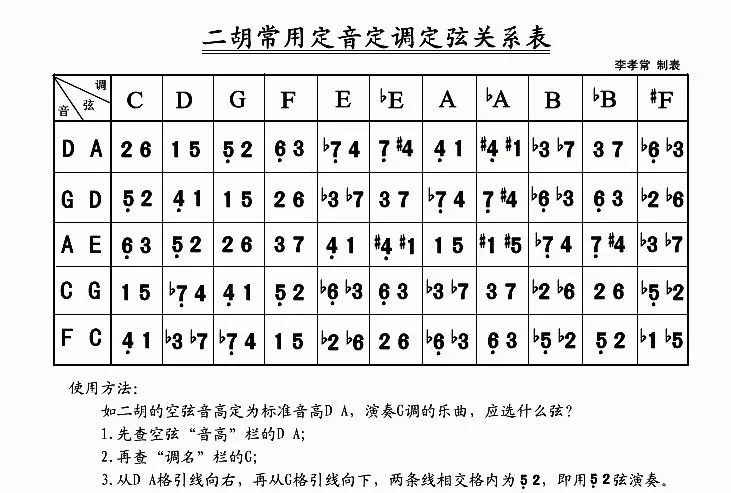How to tune the erhu
The commonly used basic keys of Erhu are: 1: 1=D key (15 strings = DA of keyboard instruments) 2: 1=G key () 3: 1=F key () 4: 1=C key () 5: 1= B flat ()
Commonly used erhu tunings are 15 strings, 52 strings, 63 strings, 37 strings and 26 strings. Among them, 15 strings and 52 strings are usually called basic tunings, and they are also widely used. Here are five common tunings: The five common tunings are 1, 5, 5, 2, 6, 3, 3, 7, and 2, 6. Among them, the two tunings of 15 and 52 are usually called basic tunings, which belong to the pressing method and are widely used. The other three tunings belong to the tangent method. The original position press tone refers to the first position including the two open string notes that can be controlled by the four press fingers after the left hand tiger's mouth holds the piano rod a little below the daughter. Learning to play must start from the original position, because the original position of each tuning is the basis of the rest of the position. To determine what tuning to play a piece of music, you should first focus on the lowest note of the piece.

1) 1 and 5 strings 1 and 5 strings are the tuning with the inner string being "1" and the outer string being "5". It is the easiest of the five common tunings to get started with. Under normal circumstances, any music whose lowest note is "1" can be played with the 15th string. The "Fan Erhuang" in Peking Opera music is generally played with 15 strings. If the erhu adopts "D, A tuning", the pitch of the 15-string pharynx is "1=D"; in folk music, the 15-string tuning method is called "small work tune".
2) Strings 5 and 2: Strings 5 and 2 are the tuning with the inner string sound of "5" and the outer string sound of "2". Any music with the lowest sound of "5" is generally suitable for playing with 52 strings. The "Erhuang" in Peking Opera music generally uses 52 strings. If the erhu is tuned by D and A, the pitch of the music played with 52 strings is "1-G".
3) 6 and 3 strings 6 and 3 strings means that the inner string sound is "6" and the outer string sound is "3". Any music whose lowest sound is "6" is generally suitable for playing with 63 strings. The "Xipi" in Peking Opera music generally uses 63 strings. If the erhu is tuned by D and A, the pitch of the music played with 63 strings is "1=F"; in folk music, the fingering method of 63 strings is called "six-character tuning".
4) Strings 3 and 7: Strings 3 and 7 means that the inner open string is "3", and the outer open string is "7". Any music whose lowest note is "3" is suitable for playing with 37 strings. If the erhu is tuned with D and A, the pitch of the music played with 37 strings is "1 = 'B". In folk music, the 37 string pressing technique is called "up character tuning".
5) Strings 2 and 6: Strings 2 and 6 are a tuning in which the sound of the inner hollow string is "2" and the sound of the outer hollow string is "6". Any piece of music with the lowest tone of "2" is suitable for playing with 26 strings, and the "anti-Western response" in Peking Opera music is also suitable for playing with 26 strings. If the erhu is tuned with D and A, the pitch of the music drawn with 26 strings is "1-C". Folk songs in some parts of southern my country and some folk songs in northern Shaanxi have unique tune styles: the former is loud and bright, while the latter is affectionate and friendly. From the point of view of the mode scale, most of this kind of music belongs to the quotient mode. The lowest note of some songs is also a "2". For these pieces, it is most appropriate to use 26 strings to play.

 渝公网安备 50010702504639号
渝公网安备 50010702504639号